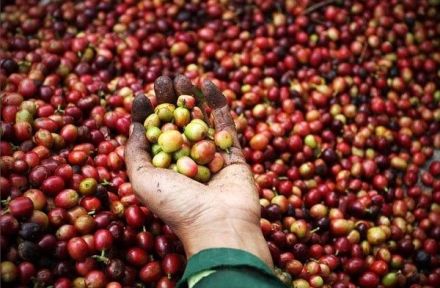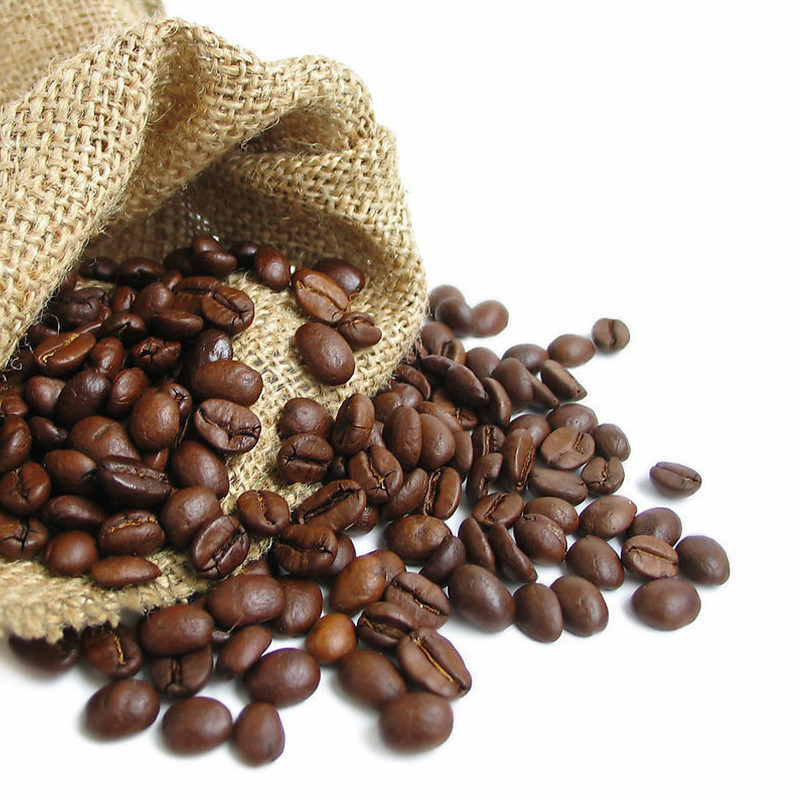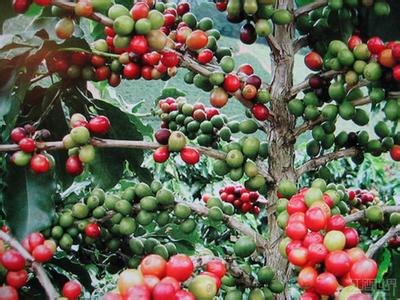From the planting of coffee trees to the harvest of coffee beans
Coffee trees take 3-5 years from planting to fruiting. 6-10 years of coffee trees are the most likely to bear fruit, about 15-20 years, is the harvest period. Coffee trees are usually bred in nurseries and grow into saplings, and then moved to coffee farms a year later, in full compliance with the way the Arabs planted and cultivated coffee trees. In the first four or five years of its growth, the coffee tree will continue to take root downward, develop its trunk upward, and develop its branches into an umbrella shape so that it can bear rich fruit in the future.

If the coffee is exposed to direct sunlight and the leaf temperature rises, the stomata will close, unable to absorb carbon dioxide, and the coffee tree will stop growing. Some taller trees will be planted next to the coffee tree to avoid being exposed to the sun for a long time. It is usually tropical cash crops such as bananas, betel nuts and so on. Banana and other cash crop trees not only shade, but also through photosynthesis, produce carbohydrates for coffee tree growth energy. As bananas grow fast and can be used as a by-product income, it can be said that coffee and bananas are good brothers of tropical cash crops.
Coffee trees can only grow in the tropics and subtropics. Coffee trees can grow in different climates, soils, elevations and rainfall in the middle of the "coffee belt". Coffee trees thrive in the hot and humid canyons and forest rainforests of Africa; it still produces high-quality coffee beans in cold, foggy, windy Central America; and in the Caribbean, where the climate is changeable, drought and torrential rain, it still blossoms and bears fruit. These factors are the secret that coffee beans have different flavors and a wide variety.
One of the characteristics of a coffee tree is that its fruit can bear fruit several times a year, and another is that flowers and fruits (also known as cherries) coexist at different stages of ripening. The whole coffee harvest is swayed by the vagaries of nature. If the fruit is too ripe, the beans in it will rot. If it is not ripe enough, the beans picked will not ripen by themselves. So bean pickers often go back to the same tree several times to find ripe fruit-it takes only 2 pounds to go back and forth several times, and a typical Arabica coffee tree produces less than 5 kilograms / 11 pounds of fruit in a year. can be made into about 1 kg / 2.2 pounds of coffee beans.
Most of the coffee harvesting in the world is selected by hand, so it is a labor-intensive and seasonally intensive process. Since there are both flowers and fruits on the same branch, the index finger and thumb of the collector are the best tools for collecting ripe berries. Scraping the fruit off a whole branch by hand or using an automated harvester can't tell ripe berries from green berries.
Coffee farmers who produce low-grade coffee beans like to use labor-saving methods to harvest beans, but in this way, because the quality is not pure, it impairs the flavor of coffee and lowers the grade of coffee. The way to pick coffee beans in some parts of Africa is to shake coffee trees, shake the fruit off the ground, and pick it up from the ground before the fruit is injured and rotten. Secondary coffee is produced in most parts of Brazil, where coffee is picked by plucking all the leaves, flowers, overheated and green fruits from the branches at a time, and it takes two years for such damaged coffee trees to return to normal.
Important Notice :
前街咖啡 FrontStreet Coffee has moved to new addredd:
FrontStreet Coffee Address: 315,Donghua East Road,GuangZhou
Tel:020 38364473
- Prev

What kind of coffee beans can be called boutique coffee beans
1. Boutique coffee beans must be high-quality beans with flawless beans. It should have an outstanding flavor, not without a bad taste, but with a particularly good taste. two。 Boutique coffee beans must be excellent varieties, such as the original bourbon species, mocha species and Tippica species. The coffee beans produced by these trees have unique aroma and flavor, which are far from comparable to other tree species, but the relative yield is higher.
- Next

Comparison of two kinds of coffee trees between Arabica and Robusta coffee beans
In terms of varieties, coffee trees are mainly divided into two types: one is Arabica, and the other is Robusta Arabica Robusta, which is mainly produced in tropical Central and South America and on the island of Madagascar in west and central Africa. Indonesia in Asia is planted on alpine slopes at an altitude of 9002000 meters above sea level and on alpine slopes at an altitude of 200600 meters above sea level.
Related
- What is the meaning of lactic acid fermentation with coffee bean treatment?
- How to judge the state of foam by sound?
- How does the latte pull out the unicorn pattern? Come to get for a little trick to improve the flower pull!
- Will flower pulling affect the taste of the latte?
- Do you know the history of coffee?
- The difference between honey treatment and sun washing what is raisin honey treatment?
- What kind of milk can a novice use to make coffee foam to keep the foam longer? The correct method and skills of milking tutorial sharing
- Why do washed coffee beans taste sour? Flavor characteristics of washed Coffee
- Introduction to the skill of how to practice the size and height of water injection around the circle of hand-brewed coffee
- How do beginners practice coffee flower drawing from scratch?

